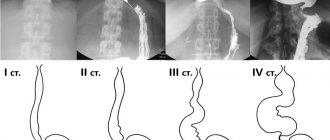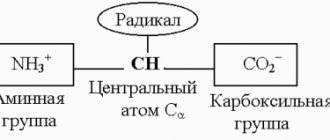Inert gases “penetrated” all leading fields of science and technology and only in the last decade of the twentieth century began to be used in medicine. The first report on the narcotic properties of xenon belongs to the Russian scientist N.V. Lazarev, who predicted in 1941 and experimentally confirmed his prediction in 1946. In the same year, American scientists confirmed the results obtained by N.V. Lazarev in an experiment on mice.
After 5 years, He was used in anesthesiological practice in one of the clinics in America (S. Cullen, E, Gross, 1951). In 1962, in Russia, xenon anesthesia in humans was used by Prof. V. P. Smolnikov. However, xenon anesthesia truly became a significant event in medical science at the turn of the 21st century, when interest in xenon sharply increased not only among anesthesiologists, but also among representatives of large companies and firms involved in the production of gases and medical products. Scientific research on Xe was especially intensified in the Netherlands, then in Russia, Germany, Italy and Japan. This is evidenced by reports on xenon for the period 1994-2005. year at international Congresses on anesthesiology, the Internet is filled. And this is no coincidence. This is not a formal tribute to the latest fashionable fad in science. These studies are aimed at the serious prospect and development of environmentally friendly and safe anesthesia for the 21st century.
Anesthesiological activity is now closely connected with the industrial production of new anesthetics, many of which are potentially toxic and environmentally hazardous. The production of nitrous oxide and other nitrogenous compounds alone accounts for more than 15% of all industrial pollution in the world. According to international protocols (Kyoto, 1997), the production of anesthetics such as halothane, pentran, enflurane, isoflurane, containing carbon, chlorine and fluorine radicals should be suspended by 2030.
Thus, today anesthetic safety is becoming part of a global environmental problem and the development of environmentally friendly anesthesia using the gas anesthetic Xe, created by nature itself, is very relevant and timely. It is necessary to take into account the indisputable fact that the anesthesiological community of the world has recognized xenon as an anesthetic of the 21st century, close to ideal.
How does intravenous sedation differ from inhalational sedation?
- intravenous sedation – deeper, in which individually selected sedatives are administered intravenously, and the patient is immersed in a state of sleep (or half-asleep). Read about this type of pain relief in a separate article.
- inhalation sedation - the patient inhales a certain drug, but remains conscious, that is, reflexes are dulled, complete relaxation occurs and anxiety is relieved.
Intravenous sedation is used as an independent means of pain relief. But inhalation xenon often precedes other types of anesthesia. Since it does not have an analgesic effect, but is aimed at reducing the level of anxiety, local anesthesia (infiltration or conduction anesthesia) is additionally used, and less often, intravenous sedation. In the second case, xenon therapy is required for general stress relief before the upcoming treatment.
Classic anesthesia
Classic anesthesia is the anesthesia that is often used in good foreign private clinics. To ensure safety, comfort, and also reduce the toxic effects on the body during anesthesia, the ANACOSMA clinic uses this approach: the simultaneous use of several of the most modern and least toxic and harmful drugs to the body. This is a combination of inhalation anesthesia, which is the least toxic (the drug Sevoflurane) and intravenous additional drugs that deepen anesthesia or enhance the analgesic effect.
How does anesthesia work?
It begins not with the administration of the drug, but with the patient being examined as widely as possible to exclude possible concomitant diseases. The anesthesiologist carefully communicates with the patient and collects anamnesis. When the patient is placed at the disposal of the anesthesiologist in the operating room, they agree on their interaction: what commands the patient should respond to, what he should do before and after anesthesia. Next, induction anesthesia is carried out - the patient is given intravenous special drugs that put him into a state of sleep. However, then, in order for the anesthesia to be less toxic, the anesthesiologist switches to inhalation anesthetics, which are more modern and have less negative effects on the patient’s health. After this, the operation itself takes place. At the end of the surgeon’s intervention, the anesthesiologist gradually reduces the amount of administered anesthesia drugs, and the patient gradually wakes up.
Under anesthesia, it is recommended to undergo operations such as endoscopic forehead lift, face lift, rhinoplasty, breast augmentation, abdominoplasty, and a large number of liposuction areas. That is, those operations that can take a long time and can cause psychological discomfort for the patient.
Despite the fact that the ANACOSMA clinic uses the most modern, imported, low-toxic drugs for anesthesia, they still cause slight discomfort in the patient after surgery, which can manifest itself as drowsiness, a slight feeling of weakness, and possibly other uncomfortable phenomena.
And now briefly about contraindications to anesthesia. Since comprehensively examined patients come to the plastic surgeon with possible contraindications for elective surgery (which is plastic surgery) excluded, this means that they do not have any other diseases that could become contraindications for anesthesia. The only point worth paying attention to is possible allergic reactions, which can occur in rare cases to local anesthetics or anesthesia drugs. But not to xenon, to which allergic reactions do not occur.
In this regard, the ANACOSMA clinic actively uses xenon anesthesia.
What treatment can be done under xenon sedation?
- dental treatment: removal of caries, treatment of root canals for pulpitis or periodontitis, removal of cysts and granulomas,
- any surgical operations,
- any treatment or prosthetics in case of panic among doctors,
- periodontal treatment within the framework of Smile Recovery complexes,
- dental implantation, both single and multiple – in this case, a higher concentration of the active substance is used, which allows for a more prolonged effect of the anesthetic, and also, if necessary, to put the patient into a medicated sleep.
We know how to treat without pain!
- complete relaxation: you will have no fear of the dentist, pain or treatment,
- complete relief of pain,
- fast recovery,
- pleasant rehabilitation after, since xenon triggers metabolic processes in the body,
- you are relaxed, which means the doctor does his job without being distracted by your emotions.
With us you will stop being afraid of dentists! Individual selection of drugs, the most modern equipment and certified doctors who professionally work with all types of anesthesia.
Enroll now
Advantages of xenon
- Does not harm the body;
- Helps relieve pain, because... is an anesthetic of natural origin;
- It does not cloud consciousness, however, it relieves pain;
- Not accompanied by addiction;
- Relieves pain and makes the treatment process pleasant for patients with an allergic reaction to anesthetics;
- Combined with other medications;
- Has antidepressant properties.
How does xenon sedation work?
All manifestations occur within the first five minutes after gas supply. If the patient experiences discomfort, the procedure can be interrupted immediately. This is a great advantage of inhalation sedation - the use of this method can be limited to a few minutes, which allows treatment of only 1-2 teeth.
Smile-at-Once clinics have installed specialized equipment for the inhalation supply of medical xenon “XeMed”. The procedure is carried out under the constant supervision of a doctor who has been trained to operate the appropriate equipment and has the necessary certificates and qualifications.
The doctor puts a mask on the patient and holds it on his face. Xenon is supplied for 5-6 minutes at the beginning of treatment and for 10 minutes towards the end.
How will you feel during the procedure?
At the initial stage, numbness of the skin, heaviness in the legs and throughout the body, changes in the perception of sound signals, dizziness, and loss of coordination may occur, but clarity of consciousness is maintained. Then comes a feeling of complete relaxation of the body, absence of painful irritation, and easy immersion in sleep. This entire range of sensations manifests itself in the first 5 minutes of exposure to the drug.
Xenon has an intoxicating effect and literally immerses a person in a feeling of euphoria. Therefore, some people (especially children) who are not familiar with this feeling may experience fear or even panic. But you need to understand that the effect of xenon can be stopped at any time, or the concentration can be increased so that the patient almost completely falls asleep.
What does xenon therapy work with?
Xenon is part of air. It comes to us from the bowels of the earth - it comes out of the soil onto the surface of the planet and hovers in the atmosphere. Thanks to special technologies that take it out of the air or when xenon gets into mixtures of gases, it is separated and purified, and then used in medicine. Its use has no restrictions, except for legislative ones - it cannot be used during pregnancy and for children under 18 years of age. For minors, the procedure is allowed only for surgical interventions.
Photo: Valeria Barinova, “Championship”
Will there be pain during and after the procedure?
No, during the operation you will not feel any discomfort, because you are relaxed, and we additionally applied local anesthesia, which numbs the surgical area.
After the operation there will be slight discomfort - you will feel weak, perhaps slightly dizzy. But there will be no severe pain, even after removing all the teeth and installing a large number of implants. After the anesthesia wears off, the pain may increase, but your doctor will prescribe pain medications for you to take if necessary. These sensations will not be associated with the use of xenon, but with tissue injury in general.
Comfortable treatment without pain! We carry out thorough diagnostics, select medications and dosages strictly individually. It's safe here!
Enroll now
Who needs these procedures?
• office workers who are always under stress and do not move much; • athletes during the inter-training period after heavy physical exertion; • people after a long flight; • people with migraine; • people who have undergone surgery or are preparing for it.
First of all, xenon works with tension, as it is a strong relaxant, but it also affects some hormones. For example, cortisol and adrenaline. The procedure does not reduce them to critical levels. The doctor strictly monitors that the indicators are at the level of a healthy person.
However, therapy cannot be used in the short term before surgery, since a sharp jump in adrenaline is possible during anesthesia. As a result, you will need a little more anesthesia in order to feel the effects of pain relief and numbness. An experienced doctor will advise you to attend a xenon therapy procedure after or the day before surgery.
Panic attacks are always accompanied by a very violent vegetative reaction - sweaty palms, increased heart rate, a feeling of lack of air, panic. Xenon allows you to minimize all these changes. The next time a person has such an attack, only the psychological factor remains, and it is much easier to deal with it. Therefore, xenon works very well in complex therapy with psychiatrists.
Photo: Valeria Barinova, “Championship”
Is it somewhat safe?
- This procedure is completely safe for the body: xenon is inert, non-toxic and is completely eliminated through the lungs within 4 hours,
- there is a rapid restoration of consciousness - within 2-3 minutes after the end of the drug administration,
- pronounced analgesic effect, while the patient is conscious and can communicate with the doctor,
- There is practically no drug load on the heart, blood pressure remains normal,
- compatibility with any medications and anesthetics,
- ideal for both time-limited procedures (for example, treatment of one tooth) and long-term manipulations (for example, installation of a large number of dental implants).
In our clinics, treatment using xenon is carried out by professional doctors who have undergone appropriate training and are accredited. In addition, modern equipment is used for safe sedation. It is mandatory to diagnose the patient’s health condition and his individual characteristics in order to select the permissible dose of the drug. The operating rooms are equipped with a ventilator and a resuscitation kit, which are mandatory when carrying out such manipulations.
Physicochemical properties of xenon.
The inertness of Xe is due to the saturation of the outer electron shell, which is extremely closed and extremely strong. Xenon consists of monatomic molecules, has no odor or color, does not burn and does not support combustion, is not explosive, is slightly soluble in water and is very quickly excreted from the body through the lungs. As an inert gas, it is noble, does not undergo any biotransformation in the body, and does not enter into any chemical reactions. Slightly soluble in water, better soluble in fats. It is 4 times heavier than air and therefore requires non-standard rotameters. Its MAC is about 60% and it is almost 2 times stronger than nitrous oxide. High molecular weight and oil/water solubility coefficient of 20.0 and a number of other characteristics allowed prof. N.V. Lazarev to predict the narcotic properties of Xe.
The distribution coefficient of Xe (0.12) is the highest compared to other volatile anesthetics, therefore it has no equal in the controllability of anesthesia. He's induction is fast. (3–6 min). Recovery from anesthesia is much faster and awakening occurs within 2 minutes with a wonderful subjective feeling, like after a pleasant sleep.
The mechanism of anesthesia remains unclear. Of theoretical interest is the ability of Xe to form Xe(H2O)6 crystal hydrates with endogenous water molecules. The latter belong to clathrate compounds, where Xe atoms (guests) are held by water molecules by van der Waals forces. This provided a theoretical basis for the creation of the molecular theory of anesthesia, expressed by Pauling and Miller in 1961, that the hydrophobic part of the protein molecule that is part of neuroglia under the influence of Xe can change the electrical potential of the neuron membrane. However, the chemistry of clathrates in biology is making only tentative steps.
However, the Mayer-Overton lipoid theory has not lost its significance, since in relation to He. Indeed, xenon, dissolving in fats, is capable of changing the state of aggregation of phospholipids, as the main component of the cell membrane and synaptic link, and reversibly disrupts the process of nerve impulse transmission. The first exposure to xenon, even in low concentrations, occurs, judging by the anesthesia clinic, in the first relay station - the gelatinous substance in the Rexed plates of the lateral horns of the spinal cord (cotton legs), then sequentially in other parts of the ascending pain conduction system.
According to recent studies, Xe primarily inhibits NMDA receptors (N-methylD-aspartat) of the central and peripheral nervous structures of the conduction system and, to a lesser extent, acts on GABA receptors, which significantly reduces the diagnostic value of the BIS spectral index as a tool for monitoring the adequacy of the depth of anesthesia. Thus, the inert gas xenon acts as a kind of key to unlocking the secrets of anesthesia.
What patients say about xenon treatment
According to our patients, surgery under sedation is completely unnoticed. I fell asleep and woke up, and the doctor had already finished all the manipulations. If the procedure takes place without medicinal sleep, then the patient remains conscious, sometimes “falls” into sleep, but responds to the doctor’s commands, answers questions and at the same time is in a relaxed state, not feeling anything that is happening in the oral cavity.
Margarita Borisovna, 65 years old
“I was very worried how everything would go, whether it would hurt. I was offered sedation - I slept for 2 hours without feeling anything and tolerated everything very easily. After 3 days I already had new teeth, which turned out to be more beautiful than my own. And I still admire how you can do everything so quickly, so well and live a completely new life!”
- without fear and without pain
- peace of mind throughout the entire operation
- as safe as possible and even beneficial for the body
- under the full control of specialists
watch a video with the patient
2. Reasons for the slow introduction of xenon into medicine.
There are three main factors that have held back the development of xenon anesthesia. These are scarcity, high cost and lack of a regulatory framework.
Xenon deficiency
World production of pure xenon is relatively small. In total, about 6,000 m³ are produced worldwide. Even by medical standards, this is not much. With this amount of Xe, no more than 300,000 operations of 2 hours duration can be performed. If we move away from universal calculations and return to our Russian conditions, then in Russia and the CIS countries the average level of annual industrial production of pure xenon is about 1235 m³. The only source of industrial production of xenon today is ambient air. IN
1000 m³ of air contains 86 ml of Xe.
The main suppliers of raw materials (krypton-xenon concentrate) are large industrial centers of the metallurgical industry of Russia and Ukraine. Inert gases are by-products of air separation. However, “dirty” sources of their production may become depleted. Due to the increased demand for Xe, the world must think about alternative sources of its production. High cost of xenon
The second limiting factor of xenon anesthesia is the relatively high cost of Xe. Today the price has increased to $10. Prices change, as in any market. Our calculations showed that even with careful consumption of Xe (closed circuit conditions), 10–12 liters of gas will be required for 2 hours of anesthesia. ($100-120). This is a bit expensive for our Russian conditions and its cost does not delight the consumer. For this reason, there has already been a decline in the practical use of xenon in our country.
Regulatory framework
However, until recently, in economically developed Western countries, it was not the shortage and high cost of xenon that were the main obstacle to the introduction of xenon anesthesia, but the lack of regulations on the use of xenon as a new anesthetic agent. This issue was not resolved until 2007 in all countries except Russia.
In 1997-98, we carried out the entire complex of preclinical and clinical tests of xenon and by order of the Minister of Health of the Russian Federation dated October 8, 1999 No. 363, this inert gas was approved for medical use as an anesthetic. At the same time, instructions for the use of xenon, a Pharmacopoeial monograph and a Registration Certificate were approved, which Akela-N LLC received for the right to produce and sell medical Xe at the request of health care facilities.
Thus, until recently, the official manufacturer of xenon in Russia remained Akela-N LLC, which has a license to produce and sell medical xenon. The production base of this institution is located in Skhodnya, where unique equipment for the production of high-purity xenon is located
99.999% from krypton-xenon concentrate. Thus, thanks to our research, a regulatory framework was already created 10 years ago and Russia took a priority position in the world in the practical use of xenon. This is a huge achievement for our country.
How to prepare for treatment under inhalational sedation
Before implantation or dental treatment using sedation, unlike general anesthesia, no special preparation is required. The only restriction concerns food - 2-3 hours before the procedure you need to avoid consuming any foods, otherwise you may experience vomiting.
Possible contraindications are necessarily excluded. These include individual intolerance to the drug, bronchial asthma or epilepsy, acute diseases of the cardiovascular system, neuropsychiatric disorders, high intracranial pressure and acute immune disorders. The next stage is the obligatory informing of the patient about how the procedure is carried out and what sensations will arise.
Sedation in dentistry: cost of treatment
Complex dental implantation under xenon will cost from 15,000 rubles, dental treatment – from 5,000 rubles. Compared to general anesthesia, which will also help cope with fear and panic, xenon sedation is a more economical option. At the same time, the quality and safety of the drug have been time-tested and do not require lengthy preparation for the procedure and the presence of a professional team of anesthesiologists and resuscitators next to the patient. Only one accredited specialist is enough. And within 5 minutes after turning off the inhalation unit, the patient gains clarity of thinking and immediately enjoys a new smile.



![Table 1. Bioavailability (absorption) of various organic forms of calcium within 2 hours after oral administration in the experiment [22]](https://laram-halal.ru/wp-content/uploads/tablica-1-biousvoyaemost-absorbciya-razlichnyh-organicheskih-form-kalciya-v-techenie-330x140.jpg)




